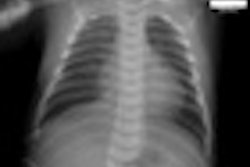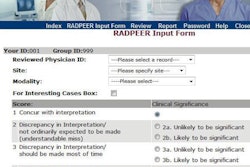Dear AuntMinnie Member,
This week brings more evidence that medical imaging utilization is dropping in the Medicare system. But will the news slow federal regulators in their inexorable drive to cut radiology payments?
The news comes in the September issue of the Journal of the American College of Radiology, which we're highlighting in our Imaging Leaders Digital Community. A research group led by Dr. David C. Levin and Dr. Vijay Rao of Thomas Jefferson University tracked imaging utilization rates from 2000 to 2010.
They found that Medicare payments for imaging grew quickly between 2000 and 2006, but payments began falling after the implementation of the Deficit Reduction Act of 2005 -- to the point where reimbursement was 21% lower in 2010 than in 2006.
The report is no surprise to anyone in radiology who's lived through the decline. The question is whether the study -- and recent research preceding it that's come to the same conclusion -- will convince bureaucrats that they've accomplished much of what they needed to do to get imaging spending in line. Read more by clicking here.
The news is especially relevant, given that today is the deadline for submitting comments to the U.S. Centers for Medicare and Medicaid Services (CMS) on its proposal to extend its controversial multiple procedure payment reduction (MPPR). Find out how to submit comments by clicking here.
While you're in the community, read about last week's high-profile arrest of a New York City imaging center owner by federal investigators. Ting Huan Tai is being charged with billing Medicare and Medicaid for up to $30 million in false claims for services that authorities say weren't performed. Learn more by clicking here.
Finally, read about the latest news in the case of David Kwiatkowski, the former radiologic technologist suspected of infecting patients with hepatitis C. Michigan authorities have revealed that he was arrested in 2006 on suspicion of stealing fentanyl while working for the University of Michigan Health System, four years before he was arrested on similar charges in New Hampshire. Get the update by clicking here.
Reducing repeat CT studies
In other news, learn about how researchers in the Pacific Northwest were able to reduce the number of repeat CT scans performed in their healthcare system by setting up a network for electronic image exchange using CDs and a virtual private network (VPN).
While CDs are being phased out and even VPNs are being superseded by newer technology, the researchers found that both were better than analog x-ray films in 2009, when the study was conducted. Implementing a new image transfer protocol based on electronic images enabled the health system to dramatically cut repeat rates.
And since then, the system's use of CDs has declined as well. Find out how they did it by clicking here, or visit our PACS Digital Community at pacs.auntminnie.com.



















